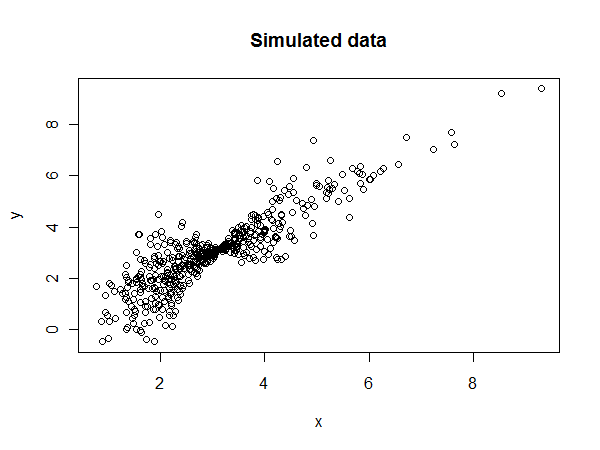This problem has an exploratory feel to it. John Tukey describes many procedures for exploring heteroscedasticity in his classic, Exploratory Data Analysis (Addison-Wesley 1977). Perhaps the most directly useful is a variant of his "wandering schematic plot." This slices one variable (such as the predicted value) into bins and uses m-letter summaries (generalizations of boxplots) to show the location, spread, and shape of the other variable for each bin. The m-letter statistics are further smoothed in order to emphasize overall patterns rather than chance deviations.
A quick version can be cooked up by exploiting the boxplot procedure in R. We illustrate with simulated strongly heteroscedastic data:
set.seed(17)
n <- 500
x <- rgamma(n, shape=6, scale=1/2)
e <- rnorm(length(x), sd=abs(sin(x)))
y <- x + e

Let's obtain the predicted values and residuals from the OLS regression:
fit <- lm(y ~ x)
res <- residuals(fit)
pred <- predict(fit)
Here, then, is the wandering schematic plot using equal-count bins for the predicted values. I use lowess for a quick-and-dirty smooth.
n.bins <- 17
bins <- cut(pred, quantile(pred,
probs = seq(0, 1, 1/n.bins)))
b <- boxplot(res ~ bins, boxwex=1/2,
main="Residuals vs. Predicted",
xlab="Predicted", ylab="Residual")
colors <- hsv(seq(2/6, 1, 1/6))
temp <- sapply(1:5, function(i) lines(lowess(1:n.bins,
b$stats[i,], f=.25),
col=colors[i], lwd=2))

The blue curve smooths the medians. Its horizontal tendency indicates the regression is generally a good fit. The other curves smooth the box ends (quartiles) and fences (which are typically extreme values). Their strong convergence and subsequent separation testify to the heteroscedasticity--and help us characterize and quantify it.
(Notice the nonlinear scale on the horizontal axis, reflecting the distribution of predicted values. With a bit more work this axis could be linearized, which sometimes is useful.)



